|
The House and Family of
Montgomerie (Seton-Winton) - Garde Bien - Hazard Yet Forward
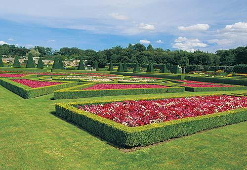 
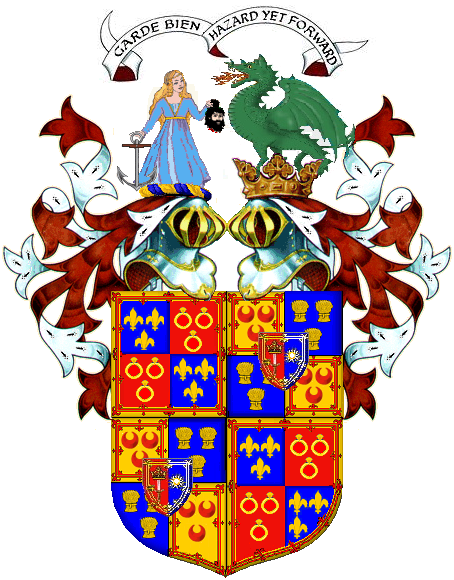 The
name Montgomery (or "Montgomerie") derives from an ancient Norman family who
held the Castle St. Foy de Montgomery near Lisieux in France. Clan tradition
asserts that the name can be traced to a 9th-century Viking raider called
Gomeric who ventured south until he reached Normandy. He was the son of Ingvar
Ragnarsson, and his name meant "powerful man." Gomeric settled in the Calvados
area and fortified a hilltop on which to live. This place was known as "Mont
(mount) Gomeric," and within a few generations it became the family name of
Montgomery. The
name Montgomery (or "Montgomerie") derives from an ancient Norman family who
held the Castle St. Foy de Montgomery near Lisieux in France. Clan tradition
asserts that the name can be traced to a 9th-century Viking raider called
Gomeric who ventured south until he reached Normandy. He was the son of Ingvar
Ragnarsson, and his name meant "powerful man." Gomeric settled in the Calvados
area and fortified a hilltop on which to live. This place was known as "Mont
(mount) Gomeric," and within a few generations it became the family name of
Montgomery.
http://www.clanmontgomery.org/
A later ancestor was Roger de Montgomerie (at the time,
spelling variations included "Mont Gommeri" and "Mundegumerie"),
who was related to William I, the Conqueror, and was granted
lands in England in the 11th century following the invasion of
1066. He later invaded Wales and in time gave his name to a town
and an entire county, Montgomeryshire. His son, also named Roger
de Montgomerie,
was created Earl of Arundel and later 1st Earl of
Shrewsbury (or
Earl of Shropshire) and was a personal advisor of King
William I.
The first of the family in Scotland was Robert de Montgomerie who obtained a grant of the lands of Eaglesham in
Renfrewshire, for some time the principal home of the Montgomeries.
A descendant of Robert was Sir John Montgomery, who led the
Clan Montgomery at the Battle of Otterburn in 1388 where the
English were defeated. He was one of the heroes of the day as he
distinguished himself by capturing Sir Henry Percy who was known
as "the Hotspur". The Percy family paid a great ransom for the
release of Henry "Hotspur" Percy and this money enabled the Clan
Montgomery to build the Polnoon Castle. Sir John Montgomerie
became
Lord of Eaglesham and died about 1398. His grandson, Sir Alexander Montgomerie (d. circa 1460), was made a Lord
of the Scottish parliament about 1445 as Lord Montgomerie, and Sir Alexander’s great-grandson
Hugh, the 3rd Lord (c. 1460-1545), was created 1st Earl of Eglinton, or Eglintoun,
in 1508.
In 1488 the Clan Montgomery had burned down the Clan
Cunningham's Kerelaw Castle. The two clans had been on opposing
sides at the Battle of Sauchieburn, with Hugh Montgomery among
the victorious rebels and Alexander Cunningham, the 1st Earl of
Glencairn slain with the defeated James III. A longstanding
rivalry (principally over the Bailieship of Cunninghame) was now
a vendetta.
During the 16th century the long-running feud continued. Edward
Cunningham of Auchenharvie was slain in 1526 and Archibald
Cunningham of Waterstoun in 1528; Eglinton Castle was burned
down by the Cunninghams in the same year.
 Tournament
Gallery Tournament
Gallery
 Winton
Claim Winton
Claim
 Eglinton
Castle Gallery Eglinton
Castle Gallery
The 2nd Earl of Eglinton had led the Clan Montgomery in
support of Mary Queen of Scots at the Battle of Langside in
1568, where the Queen was defeated. The Earl was declared guilty
of treason by the Regency and imprisoned in Doune Castle. When
the Earl, chief of Clan Montgomery was released, he tried to
secure the safety and toleration of Catholics in the wake of the
Reformation. Hugh, who was a person of importance during the minority of James V, was succeeded by his
grandson, also Hugh (d. 1546), and then by the latter’s son, Hugh (c. 1531-1585), who became 3rd Earl
of Eglinton. The 3rd Earl was a firm supporter of Mary queen of Scots, for whom he
fought at Langside, and of the Roman Catholic Church; his son and successor, Hugh, was murdered
in April 1586 by the Cunninghams, a family with which his own had an hereditary
blood feud:
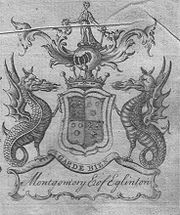 In
April 1586, Hugh Montgomery, 4th Earl of Eglinton, aged
twenty-four, was travelling to Stirling to join the Court having
been commanded to attend by the King, accompanied only by a few
domestic servants. He stopped at Lainshaw Castle to dine with
his close relative, a Montgomery, the Lord of Lainshaw, whose
Lady was a Margaret Cunningham of Aiket Castle, with sisters
married to John Cunningham of Corsehill and David Cunninghame of
Robertland. It seems that a plot to kill the Earl had been
organised and the Lady, or some say a servant girl who was also
a Cunningham, climbed to the battlements after the meal to hang
out a white table napkin and thereby sprung the trap. Thirty
Cunninghames attacked the Earl as he crossed Annick Ford and cut
his servants to pieces; the Earl himself was dispatched with a
single shot from the pistol of John Cunningham of Clonbeith
Castle. His horse carried his dead body along the side of the
river, still known as the 'Weeping', 'Mourning' or 'Widows'
path. In
April 1586, Hugh Montgomery, 4th Earl of Eglinton, aged
twenty-four, was travelling to Stirling to join the Court having
been commanded to attend by the King, accompanied only by a few
domestic servants. He stopped at Lainshaw Castle to dine with
his close relative, a Montgomery, the Lord of Lainshaw, whose
Lady was a Margaret Cunningham of Aiket Castle, with sisters
married to John Cunningham of Corsehill and David Cunninghame of
Robertland. It seems that a plot to kill the Earl had been
organised and the Lady, or some say a servant girl who was also
a Cunningham, climbed to the battlements after the meal to hang
out a white table napkin and thereby sprung the trap. Thirty
Cunninghames attacked the Earl as he crossed Annick Ford and cut
his servants to pieces; the Earl himself was dispatched with a
single shot from the pistol of John Cunningham of Clonbeith
Castle. His horse carried his dead body along the side of the
river, still known as the 'Weeping', 'Mourning' or 'Widows'
path.
A wave of bloody revenge swept over Cunninghame and
elsewhere. Cunningham relatives, friends and supporters were
killed without mercy. Aiket was killed near his home; Robertland
and Corsehill escaped to Denmark. Clonbeith was traced to
Hamilton Palace and hacked to pieces by Robert Montgomery and
John Pollock. Robert also killed the Earl of Glencairn's brother
the Commendator of Kilwinning Abbey, Alexander of Montgreenan,
thought to have instigated Hugh's murder. He rode to Montgreenan
and shot the Commendator at his own gate. The government
of King James VI of Scotland eventually intervening and managed
to make the chiefs of the two clans shake hands. In 1661
Lord High Chancellor William Cunningham, 9th Earl of Glencairn,
married Margaret Montgomery, daughter of Alexander, 6th Earl of
Eglinton, drawing a line under the feud.
In 1600 the Clan MacAlister had also attacked the Clan
Montgomery. They seized everything belonging to the Chief John
Montgomery of Skelmorlie including £12,000 worth of possessons.
Two years later, chief Archibald MacAlister along with Angus Og
MacDonald carried out a similar attack on the inhabitants of the
Isle of Bute against the Clan Stuart. A year afterwards
Archibald MacAlister and Angus Og MacDonald were accused of
being rebels, charged with treason and hanged in Edinburgh
Tollbooth.
In 1612, by the death of Hugh, the 5th Earl, the male line of the Montgomeries became extinct. Having no children Earl Hugh had settled his title and
estates on his cousin, Sir Alexander Seton of Foulstruther (1588-1661), a younger son of Robert
Seton, 1st Earl of Wintoun (c. 1550-1603), and his wife Margaret, daughter of the 3rd Earl of
Eglinton. Alexander, who thus became the 6th Earl of Eglinton and took the, name of
Montgomerie, was commonly called Greysteel; he was a prominent Covenanter and
fought against Charles I. at Marston Moor. Later, however,
he supported the cause of Charles II, and fell into the hands of
Cromwell, who imprisoned him.
This succession was not without
contention, and King James VI personally intervened and
objected. It was only through the negotiation and the
influence of Alexander Seton, 1st Earl of Dunfermline and
Chancellor of Scotland as well as her Majesty Queen Anne that
Sir Alexander Seton of Foulstruther was
able to become the 6th Earl of Eglinton. However, the
arrangement precluded that he and his heirs take the name of
Montgomerie for that family line to continue, and no longer to
be known as 'Seton'.
Views of the original castle of Eglinton:
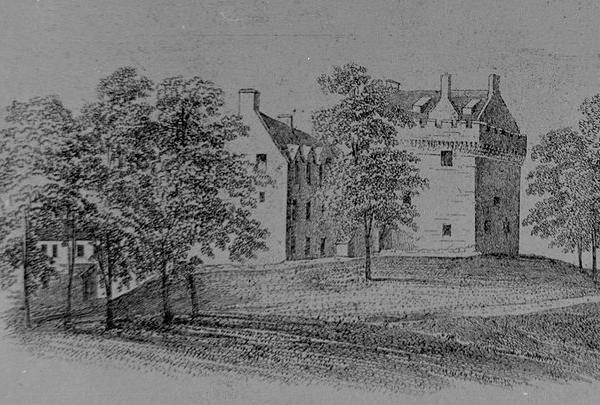 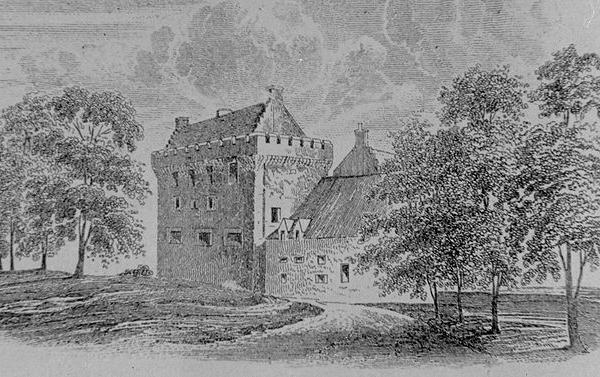
His fifth son, Robert Montgomerie
(d. 1684), was a soldier of distinction and fought against Cromwell at Dunbar and at Worcester,
afterwards escaping from the Tower of London and serving in Denmark. Robert’s elder
brother, Hugh, 7th earl of Eglinton (1613-1669), who also fought against Cromwell, was the
grandfather of Alexander, the 9th Earl (c. 1660-1729), who married, for his third wife,
Susannah (1689-1780), daughter of Sir Archibald Kennedy, Bart., of Culzean, a lady celebrated
for her wit and beauty. Alexander, the 10th Earl (17 23-1769), a son of the 9th Earl, was
one of the first of the Scottish landowners to carry out improvements on his estates. He
was shot near Ardrossan by an excise officer named Mungo Campbell on the 24th of October 1769,
in a dispute about Campbell's right to bear arms on Lord
Eglinton's grounds.
His brother and successor, Archibald, the 11th Earl (1726-1796), raised a regiment of
Highlanders with which he served in America during the Seven Years’ War. As he left no
male issue he was succeeded in the Earidom by his kinsman Hugh Montgomerie (1739-1819), a
descendant of the 6th Earl, who was created a peer of the United Kingdom as Baron Ardrossan in
1806. Before succeeding to the Earldom Hugh had served in the American war and had been a
member of parliament; after this event he began to rebuild Eglinton castle on a magnificent
scale and to construct a harbour at Ardrossan.
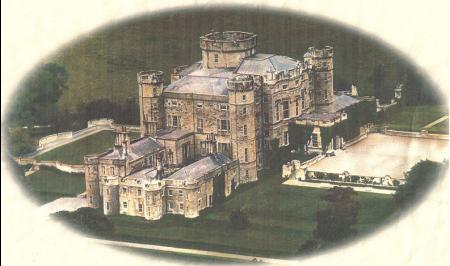 This Earl’s successor was his grandson, Archibald
William, the 13th earl (1812-1861), who was born at Palermo in the 29th of September 1812.
His father was Archibald, Lord Montgomerie (1773-1814), the eldest son of the 12th Earl, and
his mother was Mary (d. 1848), a daughter of the 11th Earl. Educated at Eton, the young Earl’s
main object of interest for some years was the turf; he kept a large racing stud and won
success and reputation in the sporting world. In 1839 his name became more widely known in
connexion with the famous tournament which took place at Eglinton castle and is
said to have cost him £30,000 or £40,000. This Earl’s successor was his grandson, Archibald
William, the 13th earl (1812-1861), who was born at Palermo in the 29th of September 1812.
His father was Archibald, Lord Montgomerie (1773-1814), the eldest son of the 12th Earl, and
his mother was Mary (d. 1848), a daughter of the 11th Earl. Educated at Eton, the young Earl’s
main object of interest for some years was the turf; he kept a large racing stud and won
success and reputation in the sporting world. In 1839 his name became more widely known in
connexion with the famous tournament which took place at Eglinton castle and is
said to have cost him £30,000 or £40,000.
This was made the subject of much ridicule and was, partly
spoiled by the unfavourable weather, the rain falling in torrents. Yet it was a real tournament
and the “knights “ broke their spears in the orthodox way. Prince Louis Napoleon
(Napoleon III.) took part in it, and Lady Seymour, a daughter of Thomas Sheridan and the wife
of Lord Seymour, afterwards 12th duke of Somerset, was the queen of beauty. A list of the
challengers with an account of the jousts and the melee will be found in the volume on the
tournament written by John Richardson, with drawings by J. H. Nixon. It is also described
by Disraeli in Endymio’n.
Eglinton was a staunch Tory, and in February 1852 he became
Lord-Lieutenant of Ireland under the Earl of Derby. He retired with the ministry in the
following December, having by his princely hospitality made himself one of the most popular of
Irish Viceroys. When Derby returned to office in February 1858 he was again appointed
Lord-Lieutenant, and he discharged the duties of this post until June 1859.
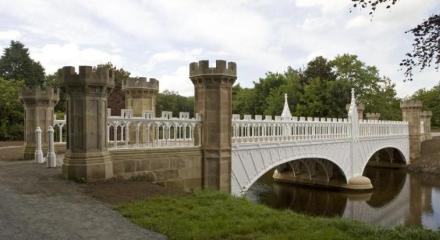 Also
in 1859, Lord Eglinton petitioned Queen Victorian to succeed to
the Honours of the Earl of Winton; an Earldom which had been held by his kinsfolk, the Setons, from
1600 until 1716 when George Seton, the 5th Earl (c. 1678-1740) was deprived of his honours
for high treason.
Within the same year, his claim was
recognized and he was created 1st Earl of Winton within the
United Kingdom as a new creation. The Earl died on the 4th of October 1861, and was succeeded by his
eldest son Archibald William (1841-1892). When this Earl died in 1892 his younger brother
George Arnulph (b. 1848) became 15th Earl of Eglinton and 3rd Earl of Winton (UK). Also
in 1859, Lord Eglinton petitioned Queen Victorian to succeed to
the Honours of the Earl of Winton; an Earldom which had been held by his kinsfolk, the Setons, from
1600 until 1716 when George Seton, the 5th Earl (c. 1678-1740) was deprived of his honours
for high treason.
Within the same year, his claim was
recognized and he was created 1st Earl of Winton within the
United Kingdom as a new creation. The Earl died on the 4th of October 1861, and was succeeded by his
eldest son Archibald William (1841-1892). When this Earl died in 1892 his younger brother
George Arnulph (b. 1848) became 15th Earl of Eglinton and 3rd Earl of Winton (UK).
The Earls of Eglinton continued the
Seton's Templarist traditions, later continued in Freemasonry,
and were Grand Masters of the Grand Lodge in Scotland (and the
Order of the Temple). Alexander Montgomerie, 10th Earl of
Eglinton, was Knight of the Red Feather in the 18th century and
who passed the Ceremonial Sword onto Lord Kilmarnock, and was
Grand Master of the Grand Lodge following shortly after Hugh
Seton of Touch, in 1750-51. Archibald Seton Montgomerie,
16th Earl of Eglinton and 4th Earl of Winton was Grand Master in
1920-21, and Archibald Montgomerie, 17th Earl of Eglinton and
5th Earl of Winton was Grand Master from 1957 to 1961.
Lords Montgomerie
(1449)
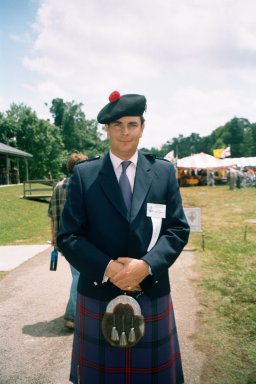 Earls
of Eglinton (1508) Earls
of Eglinton (1508)
Seton Earls of Eglinton (16
Earls of Eglinton and
Winton, UK (1859)
-
Archibald William Montgomerie, 13th Earl of
Eglinton, 1st Earl of Winton, UK
(1812–1861)
-
Archibald William Montgomerie, 14th Earl of
Eglinton, 2nd Earl of Winton, UK
(1841–1892)
-
George Arnulph Montgomerie, 15th Earl of
Eglinton, 3rd Earl of Winton, UK
(1848–1919)
-
Archibald Seton Montgomerie, 16th Earl of
Eglinton, 4th Earl of Winton, UK
(1880–1945)
-
Archibald William Alexander Montgomerie, 17th
Earl of Eglinton, 5th Earl of Winton, UK
(1914–1966)
-
Archibald George Montgomerie, 18th Earl of
Eglinton, 6th Earl of Winton, UK (b.
1939)
The present head of the family is
Archibald George Montgomerie, 18th Earl of Eglinton and 6th Earl
of Winton (UK).
The
Heir Apparent is the
present holder's son
Hugh Archibald William
Montgomerie, Lord Montgomerie (b. 1966)
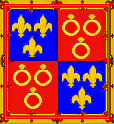 Montgomerie's
Regiment Montgomerie's
Regiment
|
 |
 Earls
of Eglinton (1508)
Earls
of Eglinton (1508)



 The
name Montgomery (or "Montgomerie") derives from an ancient Norman family who
held the Castle St. Foy de Montgomery near Lisieux in France. Clan tradition
asserts that the name can be traced to a 9th-century Viking raider called
Gomeric who ventured south until he reached Normandy. He was the son of Ingvar
Ragnarsson, and his name meant "powerful man." Gomeric settled in the Calvados
area and fortified a hilltop on which to live. This place was known as "Mont
(mount) Gomeric," and within a few generations it became the family name of
Montgomery.
The
name Montgomery (or "Montgomerie") derives from an ancient Norman family who
held the Castle St. Foy de Montgomery near Lisieux in France. Clan tradition
asserts that the name can be traced to a 9th-century Viking raider called
Gomeric who ventured south until he reached Normandy. He was the son of Ingvar
Ragnarsson, and his name meant "powerful man." Gomeric settled in the Calvados
area and fortified a hilltop on which to live. This place was known as "Mont
(mount) Gomeric," and within a few generations it became the family name of
Montgomery.
 In
April 1586, Hugh Montgomery, 4th Earl of Eglinton, aged
twenty-four, was travelling to Stirling to join the Court having
been commanded to attend by the King, accompanied only by a few
domestic servants. He stopped at Lainshaw Castle to dine with
his close relative, a Montgomery, the Lord of Lainshaw, whose
Lady was a Margaret Cunningham of Aiket Castle, with sisters
married to John Cunningham of Corsehill and David Cunninghame of
Robertland. It seems that a plot to kill the Earl had been
organised and the Lady, or some say a servant girl who was also
a Cunningham, climbed to the battlements after the meal to hang
out a white table napkin and thereby sprung the trap. Thirty
Cunninghames attacked the Earl as he crossed Annick Ford and cut
his servants to pieces; the Earl himself was dispatched with a
single shot from the pistol of John Cunningham of Clonbeith
Castle. His horse carried his dead body along the side of the
river, still known as the 'Weeping', 'Mourning' or 'Widows'
path.
In
April 1586, Hugh Montgomery, 4th Earl of Eglinton, aged
twenty-four, was travelling to Stirling to join the Court having
been commanded to attend by the King, accompanied only by a few
domestic servants. He stopped at Lainshaw Castle to dine with
his close relative, a Montgomery, the Lord of Lainshaw, whose
Lady was a Margaret Cunningham of Aiket Castle, with sisters
married to John Cunningham of Corsehill and David Cunninghame of
Robertland. It seems that a plot to kill the Earl had been
organised and the Lady, or some say a servant girl who was also
a Cunningham, climbed to the battlements after the meal to hang
out a white table napkin and thereby sprung the trap. Thirty
Cunninghames attacked the Earl as he crossed Annick Ford and cut
his servants to pieces; the Earl himself was dispatched with a
single shot from the pistol of John Cunningham of Clonbeith
Castle. His horse carried his dead body along the side of the
river, still known as the 'Weeping', 'Mourning' or 'Widows'
path.

 This Earl’s successor was his grandson, Archibald
William, the 13th earl (1812-1861), who was born at Palermo in the 29th of September 1812.
His father was Archibald, Lord Montgomerie (1773-1814), the eldest son of the 12th Earl, and
his mother was Mary (d. 1848), a daughter of the 11th Earl. Educated at Eton, the young Earl’s
main object of interest for some years was the turf; he kept a large racing stud and won
success and reputation in the sporting world. In 1839 his name became more widely known in
connexion with the famous tournament which took place at Eglinton castle and is
said to have cost him £30,000 or £40,000.
This Earl’s successor was his grandson, Archibald
William, the 13th earl (1812-1861), who was born at Palermo in the 29th of September 1812.
His father was Archibald, Lord Montgomerie (1773-1814), the eldest son of the 12th Earl, and
his mother was Mary (d. 1848), a daughter of the 11th Earl. Educated at Eton, the young Earl’s
main object of interest for some years was the turf; he kept a large racing stud and won
success and reputation in the sporting world. In 1839 his name became more widely known in
connexion with the famous tournament which took place at Eglinton castle and is
said to have cost him £30,000 or £40,000. Also
in 1859, Lord Eglinton petitioned Queen Victorian to succeed to
the Honours of the Earl of Winton; an Earldom which had been held by his kinsfolk, the Setons, from
1600 until 1716 when George Seton, the 5th Earl (c. 1678-1740) was deprived of his honours
for high treason.
Within the same year, his claim was
recognized and he was created 1st Earl of Winton within the
United Kingdom as a new creation. The Earl died on the 4th of October 1861, and was succeeded by his
eldest son Archibald William (1841-1892). When this Earl died in 1892 his younger brother
George Arnulph (b. 1848) became 15th Earl of Eglinton and 3rd Earl of Winton (UK).
Also
in 1859, Lord Eglinton petitioned Queen Victorian to succeed to
the Honours of the Earl of Winton; an Earldom which had been held by his kinsfolk, the Setons, from
1600 until 1716 when George Seton, the 5th Earl (c. 1678-1740) was deprived of his honours
for high treason.
Within the same year, his claim was
recognized and he was created 1st Earl of Winton within the
United Kingdom as a new creation. The Earl died on the 4th of October 1861, and was succeeded by his
eldest son Archibald William (1841-1892). When this Earl died in 1892 his younger brother
George Arnulph (b. 1848) became 15th Earl of Eglinton and 3rd Earl of Winton (UK).